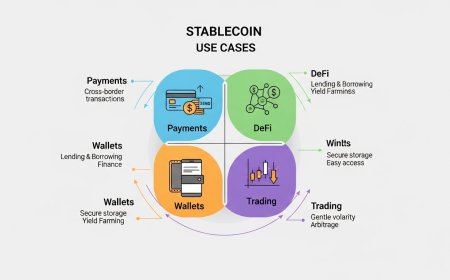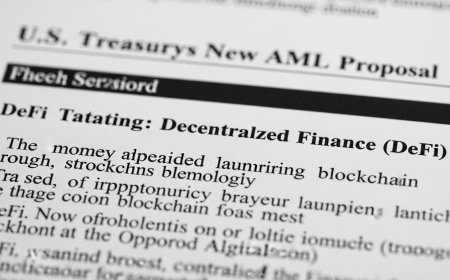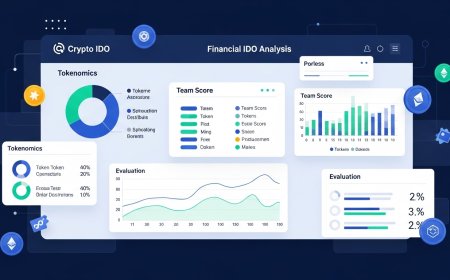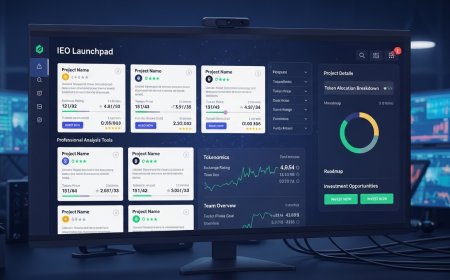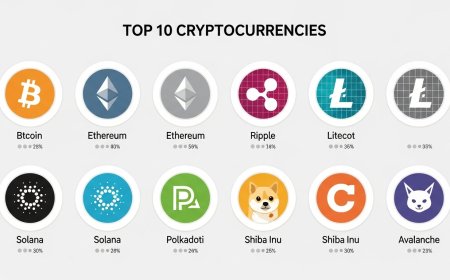Crypto Airdrop Guide 2025: How to Evaluate and Claim Free Tokens Safely
Discover how to identify, evaluate, and safely claim cryptocurrency airdrops with our comprehensive guide. Learn proven strategies to maximize airdrop rewards while avoiding scams and protecting your digital assets from common threats. Master crypto airdrops with our expert guide. Learn to identify legitimate opportunities, avoid scams, and maximize free token rewards safely in 2025.

Introduction: The Airdrop Opportunity
Cryptocurrency airdrops represent one of the most accessible ways to earn free digital assets in the blockchain ecosystem. From Uniswap's historic $1,200+ distribution to recent LayerZero and Arbitrum airdrops worth thousands of dollars, these token distributions have created substantial wealth for prepared participants.
However, the airdrop landscape has become increasingly sophisticated, requiring strategic thinking and careful evaluation to maximize opportunities while avoiding the numerous scams and worthless tokens that flood the market daily. This comprehensive guide provides you with professional-grade frameworks for identifying, evaluating, and claiming legitimate airdrops safely.
Whether you're new to cryptocurrency or an experienced DeFi user, understanding how to effectively participate in airdrops can provide significant portfolio benefits with relatively low risk. The strategies outlined here have been refined through analysis of hundreds of successful airdrop campaigns and represent current best practices in the rapidly evolving space.
The key to successful airdrop participation lies in systematic preparation, careful project evaluation, and consistent execution of proven strategies. By following the methodologies presented in this guide, you can position yourself to capture substantial value from future token distributions while protecting your digital assets from common threats.
Understanding Cryptocurrency Airdrops
What Are Crypto Airdrops?
Cryptocurrency airdrops are marketing strategies where blockchain projects distribute free tokens to existing cryptocurrency holders or users who meet specific criteria. These distributions serve multiple purposes including increasing token distribution, rewarding early adopters, building community engagement, and generating publicity for new projects.
Airdrops have evolved from simple marketing gimmicks to sophisticated token distribution mechanisms that can significantly impact project success and user adoption. Major protocols like Ethereum layer 2 solutions, DeFi platforms, and new blockchain networks frequently use airdrops to bootstrap their ecosystems and incentivize early participation.
The value of individual airdrops varies dramatically, ranging from worthless tokens to distributions worth tens of thousands of dollars. The Uniswap airdrop in September 2020 distributed 400 UNI tokens to anyone who had used the protocol, initially worth around $1,200 and reaching peak values over $3,000 per recipient.
Why Projects Conduct Airdrops
User Acquisition and Retention: Airdrops attract new users to platforms and encourage existing users to increase their engagement. Projects can rapidly grow their user base by offering token incentives for specific actions or milestones.
Token Distribution: Fair token distribution is crucial for decentralized projects. Airdrops help achieve broader token ownership, reducing concentration risk and improving governance participation across diverse stakeholder groups.
Network Effects: Distributed tokens create network effects as recipients become stakeholders with incentives to promote and use the platform. This organic growth can be more effective than traditional marketing approaches.
Regulatory Considerations: Airdrops can help projects avoid securities classification issues by distributing tokens based on usage rather than investment, though regulatory frameworks continue evolving globally.
Economic Impact of Airdrops
The total value distributed through airdrops has exceeded billions of dollars, with some individual campaigns distributing hundreds of millions in token value. This massive wealth transfer has created new opportunities for retail participants to access valuable tokens without initial investment.
However, airdrop economics are complex. While recipients receive free tokens, the dilution effect on existing holders and potential sell pressure from airdrop recipients must be considered. Successful projects design airdrop mechanisms that balance reward distribution with long-term tokenomics sustainability.
The timing and structure of airdrops significantly impact their success. Projects must balance immediate marketing impact with long-term community building, often using vesting schedules and qualification criteria to ensure recipients have genuine interest in the project's success.
Types of Crypto Airdrops
Standard Airdrops
Snapshot Airdrops: Projects take a blockchain snapshot at a specific block height and distribute tokens to all addresses holding qualifying tokens at that moment. These airdrops reward passive holding and are common among DeFi protocols wanting to reward existing ecosystem participants.
Registration Airdrops: Users must actively register or sign up to qualify for token distribution. These airdrops often require social media engagement, email subscription, or basic KYC information, helping projects build marketing databases and community engagement.
Task-Based Airdrops: Recipients must complete specific actions such as following social media accounts, joining Discord servers, or referring friends. While these airdrops typically offer smaller rewards, they're accessible to users without existing crypto holdings.
Advanced Airdrop Types
Retroactive Airdrops: Projects reward users who have already interacted with their platforms before the airdrop announcement. These unexpected distributions often provide the highest value as they reward genuine early adoption rather than airdrop farming behavior.
Liquidity Provider Rewards: DeFi protocols frequently airdrop tokens to users who have provided liquidity to their platforms. These airdrops reward users who have taken risks by locking capital and supporting protocol development.
Governance Airdrops: Tokens distributed specifically for governance participation, often requiring recipients to actively vote on proposals or participate in community decision-making processes.
Exclusive and Conditional Airdrops
Holder Airdrops: Require ownership of specific NFTs, tokens, or participation in particular protocols. These airdrops create incentives for ecosystem participation and can significantly increase demand for qualifying assets.
Bridge and Cross-Chain Airdrops: Reward users who bridge assets between different blockchains or use cross-chain protocols. As multi-chain ecosystems develop, these airdrops incentivize infrastructure adoption.
Developer Airdrops: Some projects specifically reward developers who have contributed to open-source development, deployed smart contracts, or built applications on their platforms.
Airdrop Evaluation Framework
Project Fundamentals Assessment
Team and Backing Analysis: Research the founding team's background, previous project experience, and advisory board composition. Strong teams with successful track records are more likely to create valuable tokens. Look for partnerships with established venture capital firms, as institutional backing often indicates thorough due diligence.
Technology and Innovation Review: Evaluate the project's technical innovation, competitive advantages, and problem-solving approach. Genuine technological advancement or significant improvements to existing solutions increase the likelihood of long-term token value appreciation.
Market Opportunity Size: Assess the total addressable market and the project's positioning within competitive landscapes. Projects addressing large, growing markets with clear value propositions are more likely to succeed and generate valuable airdrops.
Tokenomics and Distribution Analysis
Total Supply and Allocation: Examine the maximum token supply, inflation schedule, and allocation percentages between team, investors, community, and ecosystem development. Balanced allocations with reasonable team vesting periods indicate healthy tokenomics.
Utility and Value Accrual: Understand how tokens integrate into the platform ecosystem and whether token usage creates genuine utility rather than artificial demand. Strong utility models support long-term token value beyond initial airdrop speculation.
Airdrop Size and Eligibility: Evaluate the percentage of total supply allocated to airdrops and the qualification criteria complexity. Larger allocations may provide more valuable distributions, but overly complex eligibility requirements can limit participation.
Community and Adoption Metrics
Social Media Engagement: Analyze Twitter followers, Discord members, Telegram subscribers, and engagement rates. Genuine community growth with high-quality discussions indicates organic interest rather than bot activity.
Developer Activity: Review GitHub repositories, commit frequency, and contributor diversity. Active development with multiple contributors suggests ongoing project advancement and technical credibility.
Partnership Quality: Assess strategic partnerships, integration announcements, and collaboration quality. Partnerships with established protocols or enterprises provide validation and potential user acquisition channels.
Security and Scam Prevention
Common Airdrop Scams
Fake Token Contracts: Scammers create tokens with names similar to legitimate projects and conduct fraudulent airdrops. Always verify token contracts through official project channels and use blockchain explorers to confirm authenticity.
Phishing Websites: Fraudulent claiming websites designed to steal private keys or seed phrases. These sites often use domains similar to legitimate projects with subtle spelling differences or alternative TLDs.
Social Media Impersonation: Fake official accounts announcing non-existent airdrops or providing malicious claiming links. Scammers often purchase follower counts and engagement to appear legitimate.
Smart Contract Exploits: Malicious claiming contracts that request excessive permissions, potentially allowing unauthorized access to wallet contents. Always review contract permissions before approving transactions.
Security Best Practices
Multi-Wallet Strategy: Use separate wallets for airdrop activities to limit exposure. Keep significant holdings in cold storage or hardware wallets that are never connected to potentially risky claiming processes.
Contract Permission Management: Regularly review and revoke unnecessary token approvals using tools like Revoke.cash. Many users maintain dangerous permissions long after airdrop claims, creating ongoing security risks.
Official Source Verification: Always verify airdrop announcements through official project websites, verified social media accounts, and reputable crypto news sources. Cross-reference information across multiple channels before participating.
Transaction Analysis: Use blockchain explorers to analyze claiming transactions and verify that contracts behave as expected. Look for unusual permission requests or suspicious contract interactions.
Red Flags and Warning Signs
Pressure Tactics: Legitimate airdrops rarely use extreme urgency or pressure tactics. Be suspicious of claims requiring immediate action or threatening permanent exclusion for delays.
Excessive Personal Information: Most legitimate airdrops require minimal personal information. Requests for sensitive data like social security numbers or extensive KYC documentation may indicate scams.
Upfront Payments: Legitimate airdrops never require payment for claiming. Any request for ETH, BTC, or other cryptocurrencies to process claims is fraudulent.
Unrealistic Promises: Extremely large airdrop values or guaranteed returns are common scam indicators. Legitimate projects provide conservative value estimates or avoid specific price predictions.
Preparation and Setup Guide
Wallet Configuration
Multi-Wallet Setup: Create dedicated wallets for airdrop activities using different wallet providers for diversification. Popular options include MetaMask, Trust Wallet, and Rainbow Wallet, each offering different features and user experiences.
Hardware Wallet Integration: For users with significant cryptocurrency holdings, integrate hardware wallets like Ledger or Trezor for secure transaction signing while keeping private keys offline.
Network Configuration: Add multiple blockchain networks to your wallets including Ethereum mainnet, Polygon, Arbitrum, Optimism, and other popular layer 2 solutions where airdrops frequently occur.
Backup and Recovery: Implement secure backup procedures for all wallet seed phrases and store them in multiple secure locations. Consider using metal backup devices for additional protection against physical damage.
Platform Account Creation
Exchange Registrations: Create accounts on major centralized exchanges where airdropped tokens are likely to be listed. Early registration can provide advantages for trading newly distributed tokens.
DeFi Platform Interactions: Begin interacting with promising DeFi protocols that haven't yet conducted airdrops. Focus on platforms with strong fundamentals and growing user bases.
Social Media Preparation: Set up Twitter, Discord, and Telegram accounts for project monitoring and community participation. Many airdrops require social media engagement or community membership.
Tracking and Organization Tools
Spreadsheet Management: Create comprehensive tracking spreadsheets documenting wallet addresses, qualification activities, and airdrop status. Include columns for project names, qualification criteria, estimated values, and claiming deadlines.
Portfolio Tracking: Use platforms like DeBank, Zapper, or Zerion to monitor wallet activities across multiple chains and track potential airdrop eligibility.
Calendar Systems: Implement calendar reminders for important dates including snapshot deadlines, claiming windows, and qualification period endings.
Airdrop Hunting Strategies
Research and Discovery Methods
Project Pipeline Analysis: Monitor venture capital funding announcements, new protocol launches, and ecosystem development initiatives. Projects in early development phases often conduct airdrops to bootstrap adoption.
Community Intelligence: Join airdrop-focused communities, Discord servers, and Telegram groups where experienced hunters share opportunities and strategies. Participate in discussions and contribute valuable insights to build reputation.
Social Media Monitoring: Follow key opinion leaders, project founders, and ecosystem developers who often provide early hints about upcoming airdrops. Set up notification alerts for important accounts.
Technical Analysis: Monitor GitHub repositories, smart contract deployments, and blockchain data to identify projects preparing for token launches. New contract deployments often precede airdrop announcements.
Qualification Strategy Development
Portfolio Diversification: Spread activities across multiple promising projects to increase overall airdrop potential. Focus efforts on projects with strong fundamentals rather than quantity alone.
Activity Consistency: Maintain regular interaction patterns with target protocols over extended periods. Many retroactive airdrops reward consistent usage rather than one-time large transactions.
Volume Optimization: Balance transaction volume with cost efficiency. Some airdrops have minimum volume requirements, while others prioritize transaction frequency over size.
Timing Considerations: Understand that early participation often provides advantages, but some projects specifically reward sustained engagement over time.
Advanced Hunting Techniques
Ecosystem Mapping: Identify interconnected projects within blockchain ecosystems that may coordinate airdrop campaigns. Participation in one protocol may qualify users for related project airdrops.
Bridge and Infrastructure Focus: Prioritize interaction with cross-chain bridges, infrastructure protocols, and foundational services that often conduct valuable airdrops to reward early adoption risk.
Governance Participation: Actively participate in DAO governance votes and proposal discussions. Many projects reward engaged community members who contribute to decentralized decision-making.
Claiming and Managing Airdrops
Optimal Claiming Strategies
Timing Considerations: Analyze market conditions and token price movements before claiming. Sometimes waiting for optimal market conditions can significantly improve airdrop value realization.
Gas Fee Management: Plan claiming activities during periods of lower network congestion to minimize transaction costs. Use gas price tracking tools to identify optimal claiming windows.
Batch Processing: When possible, batch multiple airdrop claims into single transactions to reduce overall gas costs and improve efficiency.
Token Management Approaches
Hold vs. Sell Decisions: Develop frameworks for deciding whether to hold or sell airdropped tokens based on project fundamentals, market conditions, and portfolio allocation strategies.
Diversification Strategies: Consider selling portions of large airdrops to lock in profits while maintaining exposure to potential upside. This approach balances risk management with growth potential.
Staking and Yield Opportunities: Research staking options, liquidity provision opportunities, and other yield-generating strategies for airdropped tokens to maximize long-term returns.
Documentation and Record Keeping
Tax Documentation: Maintain detailed records of all airdrop receipts including dates, token amounts, and fair market values at receipt time for accurate tax reporting.
Performance Tracking: Document the performance of claimed airdrops over time to refine evaluation criteria and improve future opportunity assessment.
Claiming Evidence: Keep screenshots and transaction hashes for all successful claims as proof of participation and for potential dispute resolution.
Tax Implications and Legal Considerations
Taxation Framework Understanding
Income Recognition: In most jurisdictions, airdropped tokens constitute taxable income at fair market value when received. Understanding local tax obligations is crucial for compliance and financial planning.
Valuation Challenges: Determining fair market value for newly distributed tokens can be complex, especially when no established trading markets exist. Consult tax professionals for guidance on valuation methodologies.
Record Keeping Requirements: Maintain comprehensive documentation of all airdrop activities including receipt dates, token quantities, market values, and subsequent transactions for accurate tax reporting.
Regulatory Compliance
KYC and AML Considerations: Some airdrops may require identity verification or compliance with anti-money laundering regulations. Understand the legal implications of participating in various airdrop types.
Securities Law Implications: The regulatory status of airdropped tokens varies by jurisdiction and token characteristics. Stay informed about evolving regulatory frameworks that may affect airdrop participation.
Cross-Border Considerations: For international participants, understand tax treaty implications and reporting requirements across multiple jurisdictions where applicable.
Advanced Airdrop Farming Techniques
Automated Strategy Development
Smart Contract Interactions: Develop systematic approaches for interacting with multiple protocols efficiently. Focus on meaningful engagement rather than superficial transaction volume.
Multi-Chain Optimization: Coordinate activities across different blockchain networks to maximize potential airdrop exposure while managing gas costs and complexity.
Liquidity Provision Strategies: Provide liquidity to promising DeFi protocols as a way to demonstrate commitment while potentially earning fees and qualifying for liquidity provider airdrops.
Sybil Attack Prevention
Natural Activity Patterns: Maintain realistic usage patterns that demonstrate genuine user behavior rather than obvious farming activities. Projects increasingly use sophisticated detection methods to identify farming behavior.
Account Separation: Keep different wallet addresses for different activities and avoid obvious connections between farming accounts that could trigger Sybil attack detection.
Community Participation: Engage authentically in project communities rather than purely transactional interactions. Genuine community members often receive preferential treatment in airdrop distributions.
Top Airdrop Opportunities 2025
Layer 2 and Scaling Solutions
Emerging Layer 2 Networks: New Ethereum Layer 2 solutions continue launching with significant airdrop potential. Focus on projects with strong technical teams, institutional backing, and clear value propositions.
Cross-Chain Infrastructure: Bridge protocols and cross-chain communication layers represent significant airdrop opportunities as multi-chain ecosystems continue developing.
Zk-Rollup Technologies: Zero-knowledge rollup projects often conduct airdrops to early users and community members. These technically advanced solutions may provide substantial future value.
DeFi Innovation Areas
Yield Aggregation Platforms: New yield farming aggregators and optimization protocols frequently reward early users with governance tokens through retroactive airdrops.
Derivatives Platforms: Decentralized derivatives and options platforms represent growing market opportunities with airdrop potential for early participants.
Insurance Protocols: DeFi insurance solutions are gaining traction and may reward early coverage buyers and liquidity providers with significant token distributions.
Emerging Sectors
GameFi and Metaverse: Gaming and virtual world projects often use airdrops to distribute governance tokens to early players and landowners.
Social Finance Platforms: Decentralized social media and creator economy platforms may conduct airdrops to early content creators and community builders.
Environmental and Carbon Credits: Sustainability-focused blockchain projects increasingly use airdrops to incentivize participation in carbon credit systems and environmental initiatives.
Common Mistakes to Avoid
Strategic Errors
FOMO-Driven Participation: Rushing into unvetted opportunities without proper research often leads to scam exposure or worthless token accumulation. Maintain disciplined evaluation processes regardless of market excitement.
Over-Diversification: Spreading efforts too thin across too many projects reduces the likelihood of meeting qualification thresholds for any individual airdrop. Focus on higher-probability opportunities with meaningful participation.
Ignoring Fundamentals: Chasing airdrops from projects with poor fundamentals rarely produces valuable long-term results. Prioritize projects with strong teams, clear use cases, and sustainable business models.
Security Mistakes
Wallet Exposure: Using primary wallets containing significant holdings for airdrop farming creates unnecessary security risks. Always use dedicated wallets for experimental activities.
Permission Mismanagement: Failing to regularly review and revoke token permissions can leave wallets vulnerable to future exploits. Implement regular security audits of wallet permissions.
Phishing Susceptibility: Clicking unverified links or entering private keys on suspicious websites has resulted in massive losses for many users. Always verify authenticity through official channels.
Execution Errors
Deadline Mismanagement: Missing claiming deadlines or qualification periods due to poor organization results in forfeited value. Implement robust tracking and reminder systems.
Gas Fee Inefficiency: Poor transaction timing and batching strategies can consume significant value through excessive gas fees. Plan activities around network congestion patterns.
Documentation Failures: Inadequate record keeping complicates tax reporting and makes it difficult to optimize future strategies based on past performance.
Case Studies and Success Stories
The Uniswap Phenomenon
The Uniswap airdrop in September 2020 distributed 400 UNI tokens to every address that had used the protocol, creating one of the most successful retroactive airdrop campaigns in crypto history. Users who had performed simple token swaps received distributions initially worth over $1,200.
Key Success Factors:
- Rewarded genuine usage rather than speculation
- No prior announcement prevented farming behavior
- Simple claiming process with clear eligibility criteria
- Strong project fundamentals supported long-term token value
Lessons Learned: The Uniswap airdrop demonstrated the value of consistent protocol interaction and established retroactive rewards as a powerful distribution mechanism. Many subsequent successful airdrops have adopted similar approaches.
Arbitrum's Strategic Distribution
Arbitrum's airdrop in March 2023 distributed ARB tokens worth thousands of dollars to early users of the Layer 2 network. The qualification criteria rewarded various forms of engagement including transaction volume, bridge usage, and application interactions.
Distribution Highlights:
- Multi-tier qualification system rewarded different levels of engagement
- Bridge users received additional allocations for early adoption risk
- Application-specific bonuses encouraged ecosystem exploration
- Governance focus aligned with decentralization objectives
Strategic Implications: The Arbitrum airdrop showed how Layer 2 networks can effectively bootstrap adoption through strategic token distributions while maintaining focus on genuine user acquisition.
LayerZero's Controversial Approach
LayerZero's highly anticipated airdrop faced controversy over Sybil attack detection and farming prevention measures. The project implemented sophisticated analysis to identify and exclude farming behavior, highlighting the ongoing evolution of airdrop distribution mechanisms.
Controversy Elements:
- Aggressive Sybil attack detection excluded many participants
- Community backlash over subjective exclusion criteria
- Appeals process created additional complexity
- Emphasis on "organic" usage over transaction volume
Industry Impact: The LayerZero situation demonstrated the challenges projects face in balancing fair distribution with farming prevention, influencing future airdrop design approaches.
Conclusion: Mastering the Art of Crypto Airdrops
Cryptocurrency airdrops represent a unique opportunity to participate in the growth of innovative blockchain projects while potentially earning significant returns on zero initial investment. However, success in airdrop hunting requires systematic approaches, careful security practices, and disciplined evaluation of opportunities.
The most successful airdrop participants combine thorough project research with consistent execution of proven strategies. They understand that sustainable airdrop hunting focuses on genuine ecosystem participation rather than superficial farming activities, and they maintain robust security practices to protect their digital assets throughout the process.
As the cryptocurrency industry continues to evolve, airdrop mechanisms will become more sophisticated, with projects implementing increasingly advanced methods to identify and reward genuine community members. This evolution favors participants who focus on authentic engagement and long-term ecosystem building rather than short-term extraction strategies.
The frameworks presented in this guide provide a foundation for systematic airdrop participation, but success ultimately depends on consistent application of these principles combined with ongoing learning and adaptation to changing market conditions. Start with smaller, lower-risk opportunities while building your evaluation capabilities and security practices.
Remember that airdrop hunting should complement rather than replace a diversified investment strategy. While the potential for substantial returns exists, the speculative nature of many airdropped tokens requires careful position sizing and risk management within your overall portfolio allocation.
The future of cryptocurrency airdrops looks promising as more projects recognize the value of community-driven token distribution. Those who approach these opportunities with proper preparation, systematic evaluation, and disciplined execution will be best positioned to capitalize on the continued evolution of this exciting aspect of the cryptocurrency ecosystem.
Stay informed about regulatory developments in your jurisdiction, maintain comprehensive documentation for tax purposes, and always prioritize security over potential rewards. The most successful airdrop hunters are those who participate sustainably over long time horizons while contributing meaningfully to the projects and communities they engage with.
Disclaimer: This guide is for educational purposes only and does not constitute financial advice. Cryptocurrency airdrops involve risks including potential loss of funds through scams or technical issues. Token values can be extremely volatile and may become worthless. Always conduct independent research and consult with qualified financial advisors before participating in cryptocurrency activities. Tax obligations vary by jurisdiction and individual circumstances.
What's Your Reaction?
 Like
0
Like
0
 Dislike
0
Dislike
0
 Love
0
Love
0
 Funny
0
Funny
0
 Angry
0
Angry
0
 Sad
0
Sad
0
 Wow
0
Wow
0















